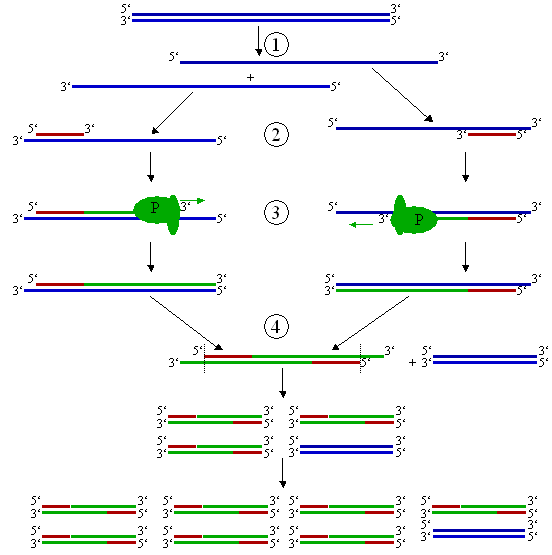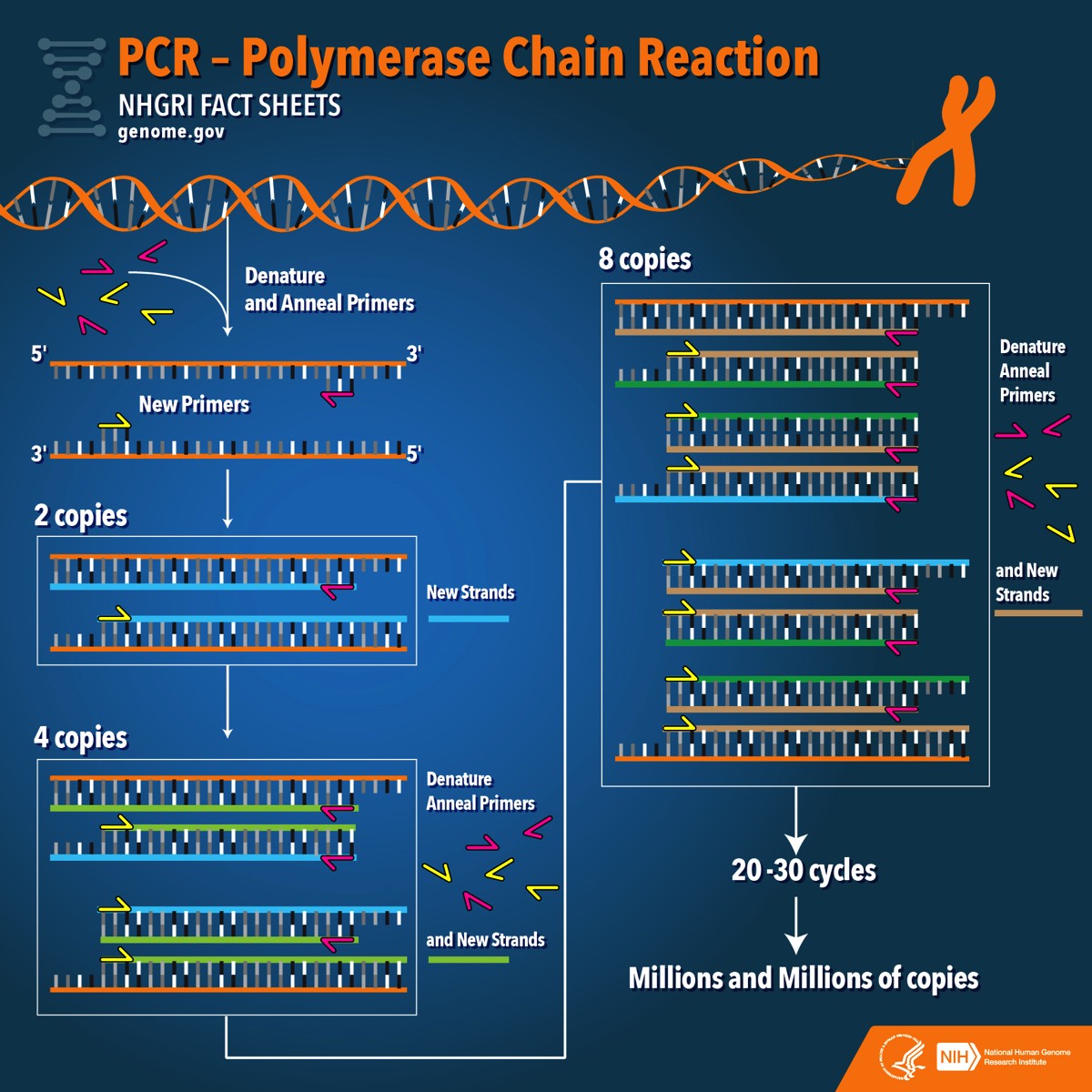What is PCR?
The polymerase chain reaction (PCR) is a test tube version of the same process of
DNA replication that is found in the living cell. It is a fast and inexpensive way to
amplify, or make many copies of, small segments of DNA. This is necessary because methods used for analyzing DNA (determining the DNA base pair sequence) require more DNA than may be in a typical sample. A particularly useful feature of PCR is that it allows the amplification process to be limited to specifically
targeted segments of the DNA mixture--such as the Y chromosome markers used in genealogical testing.
When your vials of cheek cells or saliva arrive at the lab for testing, the DNA is
extracted and purified. They are first mixed with a detergent which causes the cells to burst open and release their DNA along with other cell contents. The mixture is then washed with a phosphate containing buffer (mild salt) solution to dilute cellular debris. With minimal preparation, the sample is ready and the DNA on the targeted area of a chromosome can be amplified.
How does PCR work?
PCR is based on the ability of a DNA polymerase enzyme to synthesize a complementary strand to a targeted segment of DNA in a test tube mixture of the
four DNA bases. Because DNA polymerase cannot initiate adding bases to a DNA strand, the mixture must also contain two DNA fragments called primers.
Primers are about 20 base pairs long and have sequences complementary to areas adjacent to each side of the target sequence.
Primer design requires that the DNA sequence around the segment to be amplified is already known. Primers can be constructed in the lab, or purchased from commercial suppliers. If chosen well, the 20-25 base pair sequence will be unique in the entire human genome so will match only the place specifically chosen. This will insure the area to be copied will be limited to the specific target segment. For an informative video about primer design see the PCR Primer Design tab at the top of this page.
The basic process of PCR is illustrated in the diagram below.


